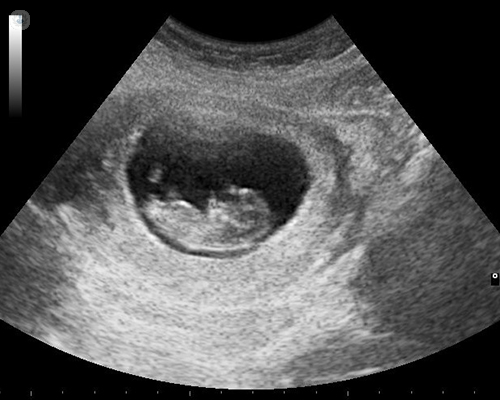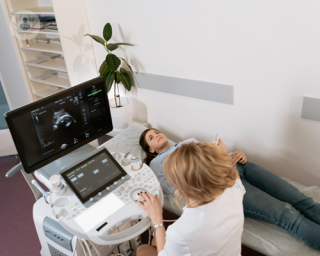Ultrasound
Dr Marina Fernando - Obstetrics & gynaecology
Created on: 11-13-2012
Updated on: 11-07-2023
Edited by: Sophie Kennedy
What is an ultrasound?
Ultrasound is a diagnostic imaging procedure that allows you to see organs and soft structures inside the body. At present, they can be 2D, 3D or four-dimensional images. Ultrasound is a non-invasive technique, in which radiation is not used. Thanks to this, it is used to visualise developing foetuses in pregnancy.

What does an ultrasound scan consist of?
It is carried out using high frequency sound waves emitted through a transducer that captures the echo of different amplitudes which occurs when they bounce off the organs. These signals, once processed by a computer, give a series of images.
Why are ultrasound scans carried out?
With this procedure you can clearly differentiate the shape and size of each structure inside the body. In medicine it is used to see the heart, kidneys, liver and blood vessels, among other organs. In addition, ultrasounds are also carried out on patients who are pregnant.
Another function of this ultrasound procedure is the study of different tissues of the body such as the blood flow of arteries and veins to detect arteriosclerosis and blood clots. Ultrasounds also allow the analysis of the thyroid gland and other soft structures of the neck as well as tendons, ligaments, muscles and joint structures.
How do you prepare for an ultrasound scan?
Usually, you do not need any type of preparation for having an ultrasound. In cases where the area to be examined is the abdomen, the specialist may tell you to drink three glasses of water approximately one hour before the test.
What happens during an ultrasound scan?
During the ultrasound, the patient will lie on a table or stretcher with the area to be analysed exposed. The specialist will apply a transparent gel that will allow the movement of the roller built into the transducer. During the scan, the expert will interpret the images and determine which shots are correct according to each case.
The only slight discomfort that can be felt is the gentle pressure that the specialist applies when passing the transducer over the body area. The gel applied can also feel quite cold when applied.
Abnormal ultrasound results
The types of images that are considered abnormal are:
- congenital anomalies
- an alteration to tissue due to trauma or injury
- cysts

















